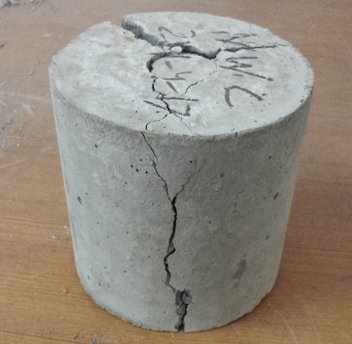Author: mianusman.iftikhar@hotmail.com
Determination of modulus of rupture of concrete
Job # 13: Determination of modulus of rupture of concrete (ASTM C 78 – 02) Significance: This test method covers the determination of the flexural strength of concrete by the use of a simple beam with third-point loading. This test method is used to determine the flexural strength of specimens prepared and cured in accordance…
Determination of tensile strength of concrete by Split cylinder test:
Job # 12: Determination of tensile strength of concrete by Split cylinder test: (ASTM C 496/C 496 M-04) Significance: This test method is used for the determination of splitting tensile strength of cylindrical concrete specimen. Splitting tensile strength is generally greater than the direct tensile strength and lower than the flexural strength (modulus of rupture)….
Determination of the Tensile Strength of Concrete by Double Punch Test
Job # 11: Determination of the Tensile Strength of Concrete by Double Punch Test Significance: It is an indirect method through which tensile strength of concrete is estimated. Apparatus: Denison Leeds, England Compression testing machine Testing Samples Punches of diameter 37 mm (2 in number, to be placed at the top and bottom of the…
To perform the compacting factor test
Job # 10: To perform the compacting factor test: Significance: This test also gives the workability of concrete indirectly. This test is appropriate for concrete with the maximum aggregate size of 40mm. Apparatus: Two hoppers each in the shape of frustum of a cone and one cylinder. The hoppers have hinge door at bottom and…
Standard test method for the slump of hydraulic cement concrete: (ASTM C-143/C-143 M-10)
Job # 9: Standard test method for the slump of hydraulic cement concrete: (ASTM C-143/C-143 M-10) Significance: This test method is used in lab and in field for finding out the slump (decrease in the height of concrete when we lift up the mold). This test is used extensively in site works all over the…
Casting of concrete for the determination of different properties in green and hardened state:
Job # 8: Casting of concrete for the determination of different properties in green and hardened state: Significance: This purpose of this experiment is to simulate the actual formation of concrete mix, its design and production. This purpose of this experiment is to simulate the actual formation of concrete mix, its design and production. Apparatus:…
Determination of the compressive strength of mortar cubes (ASTM C-109)
Job # 7: Determination of the compressive strength of mortar cubes (ASTM C-109) Significance: This test method covers determination of the compressive strength of ordinary Portland cement mortars, using 2-in. or [50-mm] cube specimens. Apparatus: Weighing balance Glass graduate Six 50 mm (2 in.) cube molds (ASTM) Hard rubber tampers 13 × 25 mm (1/2…
Determination of Relative Density (Specific Gravity) And Water Absorption of Different Aggregate (ASTM C-127/128)
Lab 6: Determination of Relative Density (Specific Gravity) And Water Absorption of Different Aggregate (ASTM C-127/128) Significance: In this test method, we determine the relative density (i.e. specific gravity) and the water absorption of the coarse aggregates. The knowledge of the specific gravity is important for the concrete technologist to determine the properties of concrete…
Determination of bulk density of aggregates
Lab 5: Determination of bulk density of aggregates: (ASTM C-29/C-29M) Significance: This test method is used to determine the bulk density of the given specimen. During the concrete mix design, when the aggregate is to be batched by volume or by weight, then it becomes necessary to know the mass of the aggregates that will…



